Frost Protection - UTL Repository
Frost Protection - UTL Repository
Frost Protection - UTL Repository
You also want an ePaper? Increase the reach of your titles
YUMPU automatically turns print PDFs into web optimized ePapers that Google loves.
ACTIVE PROTECTION METHODS<br />
the trunk temperatures for the 38 litre h -1 treatment fell only to -2.5 °C when<br />
the air temperature fell to -12 °C, so clearly the combination of microsprinklers<br />
with trunk wraps was beneficial. The authors also reported that a 90° spray<br />
pattern gave better protection than the 360° pattern. There was no measurable<br />
difference between air temperatures or humidity in the irrigated and non-irrigated<br />
treatments, but the upward long-wave radiation was higher in the irrigated plots.<br />
More protection is afforded by covering a larger area with water; however,<br />
there is additional benefit coming from water placed under the plants where<br />
radiation and convection are more beneficial than water placed between crop<br />
rows. However, if you spread the same amount of water over a larger area, the<br />
ice is likely to cool more than if the water is concentrated into a smaller area.<br />
Again, the best practice is to supply sufficient water to cover as large of an area<br />
as possible and be sure that there is a liquid ice mixture over the surface under<br />
the worst conditions that are likely to occur.<br />
Powell and Himelrick (2000) reported successful use of under-tree sprinkling<br />
with microsprinklers in Alabama and Louisiana on Satsuma mandarin. Their<br />
goal was to find a method that would provide full protection against moderate<br />
frosts and protection to the trunk and lower branches during severe frosts. The<br />
partial protection during severe frosts helps damaged trees to recover more<br />
rapidly. They reported that two risers per tree (i.e. at 0.75 m and 1.5 m), with an<br />
output rate of 90.8 litre h -1 per sprinkler head, gave the best results.<br />
Low-volume (trickle-drip) irrigation<br />
Low-volume (trickle-drip) irrigation systems are sometimes used for frost<br />
protection with varied results. Any benefit from applying water comes mainly<br />
from freezing water on the surface, which releases latent heat. However, if<br />
evaporation rates are sufficiently high, it is possible that more energy can be lost<br />
to vaporize water than is gained by the freezing process. Because of the wide<br />
variety of system components and application rates, it is difficult to generalize<br />
about the effectiveness of low-volume systems. Again, the best approach is to<br />
test the system during the dormant season and note what happens under a range<br />
of weather conditions. If the water on the ground surface is a liquid-ice mixture<br />
at 0 °C, then the system is beneficial. However, if all the water freezes and has a<br />
milky white appearance, the system was inefficient for those conditions. One<br />
should be aware that operating a low-volume system under frost conditions<br />
might damage the irrigation system if freezing is severe. Heating the water would<br />
reduce the chances of damage and will provide more protection. However,<br />
heating may not be cost-effective.<br />
179


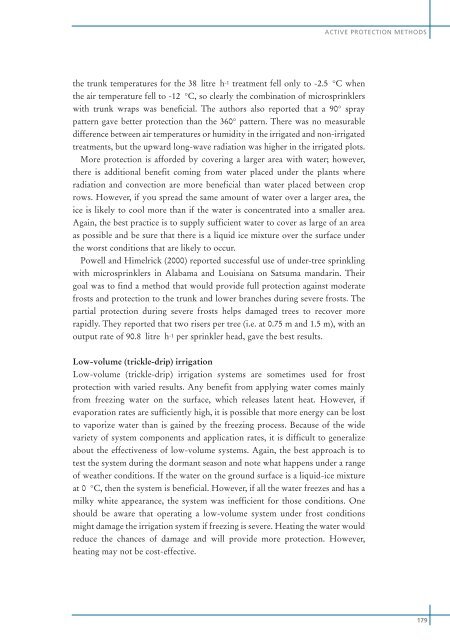
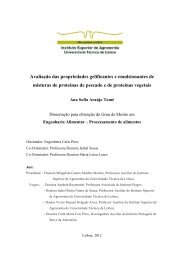
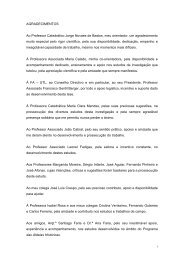
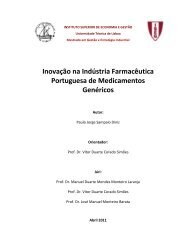
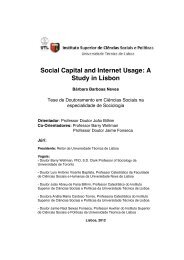
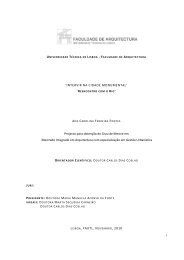
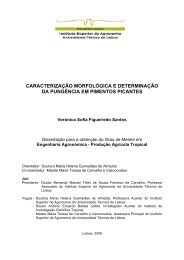

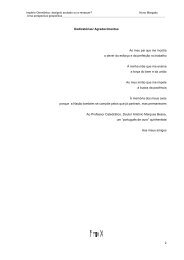
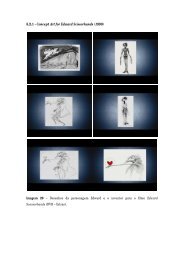
![Tese - Es..[1].pdf - UTL Repository - Universidade Técnica de Lisboa](https://img.yumpu.com/25707135/1/184x260/tese-es1pdf-utl-repository-universidade-taccnica-de-lisboa.jpg?quality=85)


